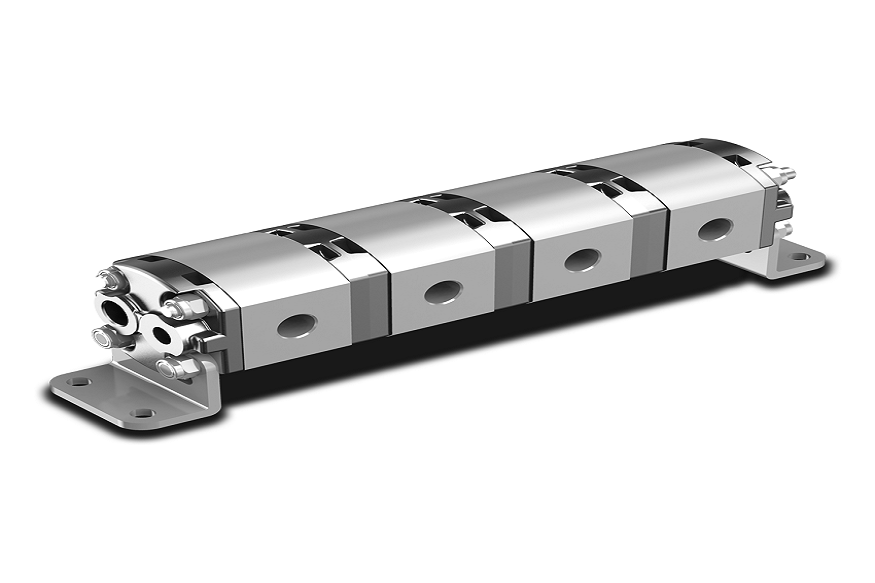Hydraulic systems power some of the most essential machinery across industrial, agricultural, and construction applications. Behind their smooth operation lies a host of components working in harmony, one of which is the flow divider. This often-overlooked yet indispensable element plays a pivotal role in ensuring precision, balance, and efficiency in hydraulic systems. This blog explores how flow dividers work, their types, and their impact on enhancing the overall performance of hydraulic systems.
By the end, you’ll understand why flow dividers are critical to optimizing hydraulic systems and how they enable various sectors to achieve precision in motion.
What Are Flow Dividers?
Flow dividers, as the name suggests, are hydraulic components designed to divide or combine fluid flow within a system. They ensure an even distribution of hydraulic fluid, irrespective of changes in loads or varying pressures across multiple actuators, such as cylinders or motors. For systems where synchronized operation is critical, flow dividers are indispensable.
At their core, flow dividers work based on the principles of fluid dynamics and mechanical energy transfer. By using highly specific flow paths and often gears or valves, these devices allocate hydraulic fluid equally or in a predetermined ratio. This synchronization promotes accurate performance, thus reducing system inefficiencies and extending equipment lifespan.
Why Are Flow Dividers Important?
Efficiency is the heartbeat of any hydraulic system. A well-designed system minimizes energy loss, maintains precision, and reduces operational costs. Flow dividers play a significant role in bringing these qualities to life:
- Synchronization: They ensure multiple actuators in the hydraulic system operate in unison, improving functionality for machinery requiring coordinated movement.
- Energy Efficiency: Uneven hydraulic flow can lead to energy waste. Flow dividers prevent this by ensuring even distribution, allowing the system to achieve maximum efficiency.
- Protection from Pressure Surges: Flow dividers reduce inconsistencies in pressure, safeguarding the system against damage caused by sudden fluid imbalances.
Industries that utilize systems that depend on meticulous coordination, such as construction or manufacturing, rely heavily on this tool to ensure smooth operations.
Types of Flow Dividers
Flow dividers come in a variety of designs depending on the application needs and the level of precision required. Below are the most common types:
Gear-Type Flow Dividers
Gear-type flow dividers use interconnected gear mechanisms to split the flow evenly or based on specific ratios. Recognized for their simplicity and durability, these dividers are frequently employed in heavy-duty applications such as agricultural equipment and construction machinery.
Key Features:
- High-efficiency ratio
- Handles high-pressure applications
- Requires minimal maintenance
Spool-Type Flow Dividers
A spool-type flow divider is incredibly versatile due to its high level of adjustability. It uses spools and control valves to regulate fluid flow, making it ideal for precision applications that demand synchronous movements.
Key Features:
- Adjustable flow rates
- Greater precision in flow control
- Well-suited for machinery with variable operational needs
Rotary Flow Dividers
Rotary flow dividers combine features of both spool and gear dividers. They rely on mechanical rotation to distribute hydrodynamic energy. Industries often use these dividers as they deliver both excellent accuracy and operational flexibility.
Key Features:
- High adaptability
- Ideal for complex hydraulic systems
- Minimal pressure loss
Understanding these types can help one select the optimal flow divider for a specific system, ensuring tailored performance and efficiency.
Use Cases of Flow Dividers Across Industries
Flow dividers are versatile and find applications across various industries where precision and reliability are paramount:
Construction
Hydraulic excavators, cranes, and loaders often rely on gear-type flow dividers to maintain equal power distribution across multiple actuators, ensuring smooth and efficient worksite operations.
Agriculture
From tractors to combines, flow dividers manage hydraulic flow in implements such as seeders and sprayers, ensuring even performance across all parts of the machine.
Manufacturing
Machinery on production lines requires precision in repetitive motion. Spool-type flow dividers are widely used to synchronize hydraulic cylinders, enabling accurate and efficient assembly processes.
Aerospace
For flight simulators and hydraulic testing systems, rotary flow dividers enhance operational consistency and reduce disruptions caused by fluid resistance.
The adaptability of flow dividers makes them critical for ensuring that complex systems operate seamlessly in diverse environments.
Benefits of Using Flow Dividers in Hydraulic Systems
Integrating flow dividers into hydraulic systems is more than just a functional choice; it’s a strategic decision that drives significant advantages. Here’s a breakdown of their key benefits:
Enhanced Precision
Flow dividers ensure that actuators work cohesively, maintaining precise timing and movement. Enhanced precision directly translates to improved product quality in industrial applications.
Improved System Durability
By reducing wear and tear caused by uneven hydraulic flow and pressure surges, flow dividers extend the lifespan of machinery components.
Reduced Energy Costs
Hydraulic systems with optimized flow experience fewer losses in energy, resulting in lower operating costs. Flow dividers contribute by distributing fluid evenly, preventing unnecessary waste of power.
Increased Productivity
From agriculture to manufacturing, synchronized hydraulic systems ensure uninterrupted operations. This reliability allows businesses to boost productivity without sacrificing quality.
Versatility
With multiple types of flow dividers available, businesses can choose devices tailored to their machines’ requirements, regardless of the application’s complexity.
How to Select the Right Flow Divider for Your System
Choosing the right flow divider requires careful evaluation of the following factors:
- System Requirements: Determine whether the system needs an even split or a specific ratio. For precision-focused industries like aerospace, spool-type or rotary dividers are often the ideal choice.
- Operating Pressure: Ensure the selected flow divider is capable of handling pressure ranges in your hydraulic system.
- Specific Features: Consider specialized needs, such as adjustability or resistance to harsh environmental conditions. For example, construction equipment may require gear-type dividers that handle high pressures effectively.
- Fluid Type: The type of hydraulic fluid used in the system can impact the efficiency and longevity of the flow divider, so compatibility is critical.
Consulting a hydraulic systems expert can simplify this decision-making process while ensuring optimal functionality.
Revolutionizing Efficiency with Flow Dividers
Flow dividers are central to the efficiency, precision, and durability of modern hydraulic systems. With their adaptability and operational advantages, these unassuming components are key drivers of innovation in industries reliant on hydraulic machinery. The right flow divider can elevate a system from standard operation to peak performance, delivering measurable returns in productivity, cost savings, and energy efficiency.
Selecting the appropriate flow divider requires an understanding of your application’s unique demands and an appreciation for the value these components bring. With their ability to balance every drop of hydraulic fluid, they truly embody precision in motion.
Discover the power of flow dividers and revolutionize your hydraulic systems today. Partner with hydraulic solutions experts to find the ideal components that meet your operational needs.



